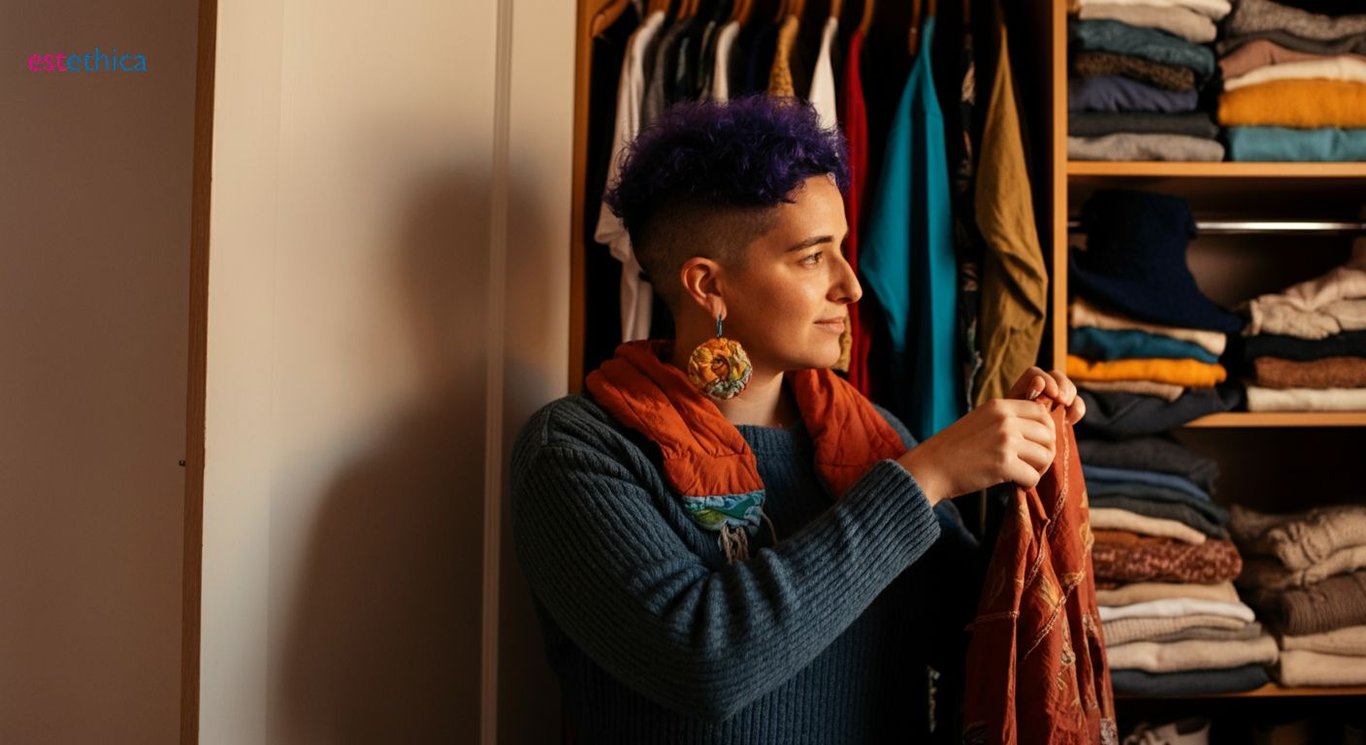Mastering Sustainable Fashion: Your Essential Guide to Eco-Friendly Choices
Discover eco-friendly clothing and ethical brands for a sustainable wardrobe journey. Embrace the future of fashion today!
Understanding the Essence of Sustainable Fashion
Sustainable fashion is a movement and process fostering change to fashion products and the fashion system towards greater ecological integrity and social justice. It involves more than addressing fashion textiles or products; it encompasses addressing the whole system of fashion. This revolution emphasizes the enhancement of well-being across society, reducing environmental impacts, and promoting ethical treatment of the workers involved. From eco-friendly materials to ethical production practices, sustainable fashion is the future. Explore this guide to navigate your journey in making conscious fashion choices.
Top Eco-Friendly Clothing Materials You Should Know
Understanding the Benefits of Eco-Friendly Clothing Materials
Eco-friendly clothing materials are gaining popularity as consumers become more conscious of their environmental impact. These materials not only reduce harm to the planet but also offer unique benefits to consumers. For instance, organic cotton is not only free from pesticides but also softer and more breathable than conventional cotton. Hemp, known for its durability, requires less water and grows quickly, making it a sustainable choice. Tencel, derived from wood pulp, is biodegradable and provides a silky texture, offering a luxurious feel without the environmental cost of traditional silk.
Key Characteristics of Sustainable Fashion Materials
- Organic Cotton: Grown without harmful chemicals, promoting soil health.
- Hemp: Rapid growth and minimal water usage make it highly sustainable.
- Tencel: Biodegradable and produced in a closed-loop process.
These materials are not only eco-friendly but also align with the principles of ethical fashion brands, which prioritize fair labor practices and environmental responsibility. By choosing garments made from these materials, consumers can support green fashion and contribute to a more sustainable future.
Steps to Choose the Best Eco-Friendly Clothing
- Research brands that prioritize sustainable practices and materials.
- Check labels for certifications like GOTS for organic textiles.
- Consider the lifecycle of the garment, including its durability and recyclability.
By following these steps, you can make informed decisions that align with your values and support the growth of sustainable fashion. As awareness grows, the demand for eco-friendly clothing materials will continue to rise, encouraging more brands to adopt sustainable practices.

How to Identify and Support Ethical Fashion Brands
Recognizing Certifications and Standards
Identifying ethical fashion brands begins with understanding the certifications and standards that signify ethical practices. Certifications like Fair Trade Certified, GOTS (Global Organic Textile Standard), and B Corp Certification are key indicators of a brand's commitment to fair wages and sustainable practices. For example, a Fair Trade Certified label ensures that workers receive fair compensation and work under safe conditions. GOTS certification guarantees that textiles are organic and produced sustainably, while B Corp Certification indicates a brand's overall social and environmental performance. These certifications help consumers make informed choices and support brands that prioritize ethical practices.
Engaging with Ethical Fashion Communities
- Join online forums and groups dedicated to sustainable fashion discussions.
- Participate in events and workshops hosted by ethical fashion advocates.
- Share experiences and reviews of ethical brands to spread awareness.
Engaging with ethical fashion communities can provide valuable insights and support for those looking to make more sustainable choices. These communities often share resources, such as lists of affordable ethical fashion brands, and discuss the latest trends in green fashion. By participating in these groups, you can stay informed about new developments and contribute to a more transparent and accountable fashion industry.
- Research brands with a proven track record of ethical practices.
- Look for transparency in supply chains and production processes.
- Support brands that actively engage in social and environmental initiatives.
By following these steps, you can effectively identify and support ethical fashion brands, contributing to a more sustainable and equitable fashion industry. As more consumers demand transparency and accountability, the influence of ethical fashion will continue to grow, encouraging more brands to adopt sustainable practices.

Practical Tips for Building a Sustainable Wardrobe
Choosing Timeless Pieces Over Trends
Building a sustainable wardrobe begins with selecting timeless pieces that transcend fleeting fashion trends. Opt for classic styles like a well-fitted blazer, a little black dress, or a quality pair of jeans. These items can be mixed and matched to create numerous outfits, reducing the need for frequent purchases. For example, a neutral-colored trench coat can be worn in various settings, from casual to formal, making it a versatile addition to any wardrobe. By focusing on timeless fashion, you not only reduce waste but also cultivate a personal style that is both enduring and eco-friendly.
Exploring Second-Hand and Vintage Shopping
Second-hand and vintage shopping are excellent ways to build a sustainable wardrobe while discovering unique pieces. Thrift stores and online platforms offer a wide array of pre-loved clothing that can add character to your collection. For instance, a vintage leather jacket not only adds a touch of retro flair but also supports the circular fashion economy by extending the life of garments. Additionally, participating in clothing swaps with friends or local communities can refresh your wardrobe without the environmental cost of new production. These practices not only promote sustainable fashion but also encourage creativity and individuality in personal style.
Caring for Your Clothes to Extend Their Lifespan
- Wash clothes in cold water to prevent fabric damage and save energy.
- Air dry garments instead of using a dryer to reduce wear and tear.
- Repair minor damages like loose buttons or small tears promptly.
Proper care can significantly extend the lifespan of your clothing, reducing the need for replacements and minimizing waste. By adopting these practices, you contribute to a more sustainable fashion industry and ensure that your wardrobe remains stylish and functional for years to come.
- Identify versatile pieces that can be styled in multiple ways.
- Incorporate second-hand items to add unique elements to your wardrobe.
- Maintain your clothing to ensure longevity and reduce environmental impact.
By following these steps, you can build a wardrobe that aligns with sustainable fashion principles, supporting both the environment and ethical practices. This approach not only enhances your personal style but also contributes to a more responsible and conscious fashion industry.

Eco-Friendly Clothing Materials: A Sustainable Choice
Building a Sustainable Wardrobe: Practical Tips
Frequently Asked Questions
What is sustainable fashion and why is it important?
What are some examples of eco-friendly clothing materials?
How can I identify ethical fashion brands?
What are some practical tips for building a sustainable wardrobe?
Why should I consider eco-friendly clothing materials?
Discover the path to 'Healthy Beauty' with estethica's expert care. Call now for your free consultation and take the first step towards a more confident you!
📞 Call for Your Free Consultation